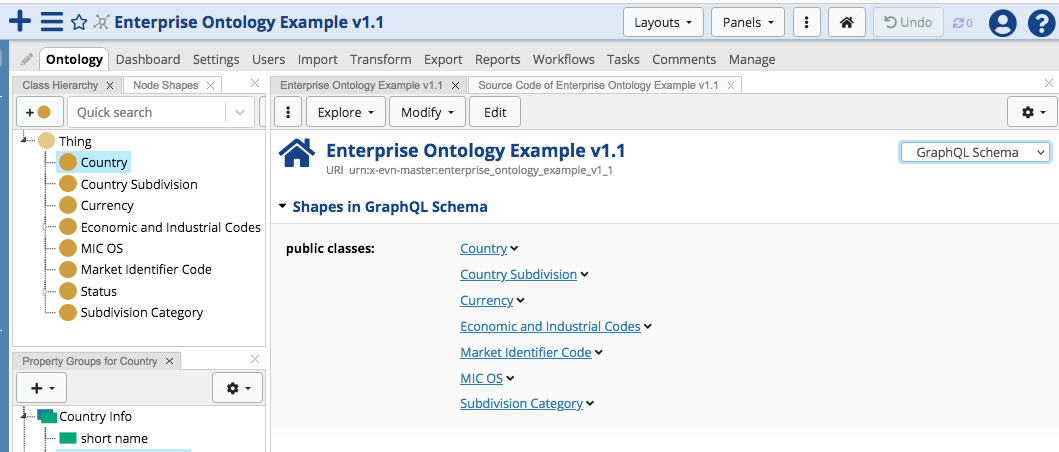Working with Data Graphs
Data Graphs are available as add-on module that can be combined with any package of TopBraid EDG.
Licensing and Enablement
The availability of any asset collection is determined by what is (a) licensed and (b) configured under Server Administration. To install a license or to view the currently licensed features, see Administrator Guide section on Product Registration` . To configure which licensed collection types are currently enabled or disabled, see Administrator Guide section on EDG Configuration Parameters.
For general licensing information and available asset collections and packages, see the TopQuadrant website.
Data Graphs Asset Collection Type
Data Graphs is an asset collection type that supports general collections containing instances of classes defined in customer-specified ontologies. This means that an organization decides what data to store in a data graph.
When creating a new Data Graphs collection, the creator selects the (top-level) Ontology upon which it is based. Ontologies can include other ontologies by reference and when using Data Graphs a single top-level ontology that includes others is assumed. Users can then work with instances of classes from the selected ontologies that are:
Declared as being SHACL Node Shapes
Declared using public classes (directly, or through a superclass) in the GraphQL Schema section of the Ontology’s form, accessible using the “home” icon

TopBraid EDG Public Classes for Data Graphs
See also
For details see SHACL Enablement
After creating a new Data Graph, the Main Class can be specified on the Manage tab if desired. This determines the default asset type (i.e. class) in the Search panel in the editor page. This setting can be changed at any time. All public ontology classes remain available in the type selector dialog.
See also
Please see the Working with Asset Collections for all the general features of asset collections such as import/export, editing, user permissions, reports and settings.